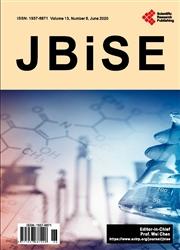Applying Deep Learning Models to Mouse Behavior Recognition
引用次数: 17
Abstract
In many animal-related studies, a high-performance animal behavior recognition system can help researchers reduce or get rid of the limitation of human assessments and make the experiments easier to reproduce. Recently, although deep learning models are holding state-of-the-art performances in human action recognition tasks, these models are not well-studied in applying to animal behavior recognition tasks. One reason is the lack of extensive datasets which are required to train these deep models for good performances. In this research, we investigated two current state-of-the-art deep learning models in human action recognition tasks, the I3D model and the R(2 + 1)D model, in solving a mouse behavior recognition task. We compared their performances with other models from previous researches and the results showed that the deep learning models that pre-trained using human action datasets then fine-tuned using the mouse behavior dataset can outperform other models from previous researches. It also shows promises of applying these deep learning models to other animal behavior recognition tasks without any significant modification in the models’ architecture, all we need to do is collecting proper datasets for the tasks and fine-tuning the pre-trained models using the collected data.将深度学习模型应用于小鼠行为识别
在许多与动物相关的研究中,高性能的动物行为识别系统可以帮助研究人员减少或摆脱人类评估的限制,并使实验更容易复制。最近,尽管深度学习模型在人类动作识别任务中具有最先进的性能,但这些模型在应用于动物行为识别任务方面还没有得到很好的研究。一个原因是缺乏训练这些深度模型以获得良好性能所需的大量数据集。在这项研究中,我们研究了人类动作识别任务中目前最先进的两种深度学习模型,即I3D模型和R(2+1)D模型,用于解决鼠标行为识别任务。我们将它们的性能与先前研究中的其他模型进行了比较,结果表明,使用人类动作数据集进行预训练,然后使用鼠标行为数据集进行微调的深度学习模型可以优于先前研究的其他模型。它还显示了将这些深度学习模型应用于其他动物行为识别任务的前景,而无需对模型的架构进行任何重大修改,我们所需要做的就是为任务收集适当的数据集,并使用收集的数据微调预训练的模型。
本文章由计算机程序翻译,如有差异,请以英文原文为准。
求助全文
约1分钟内获得全文
求助全文

 求助内容:
求助内容: 应助结果提醒方式:
应助结果提醒方式:


